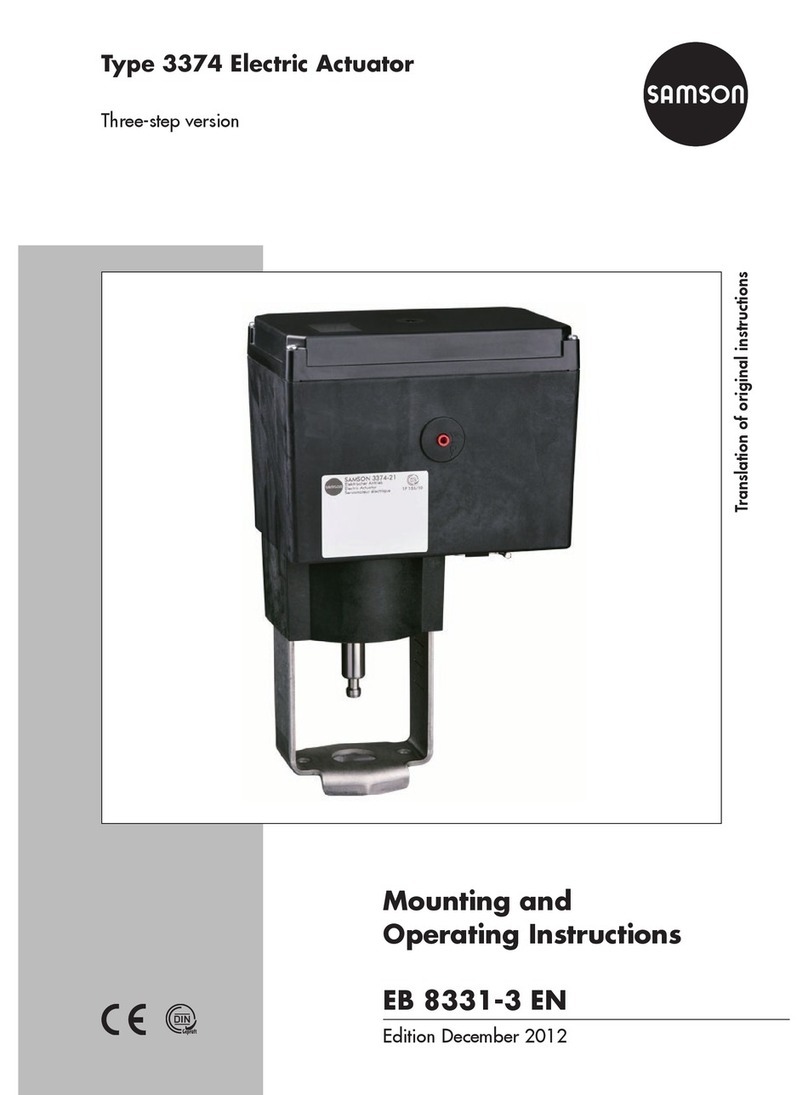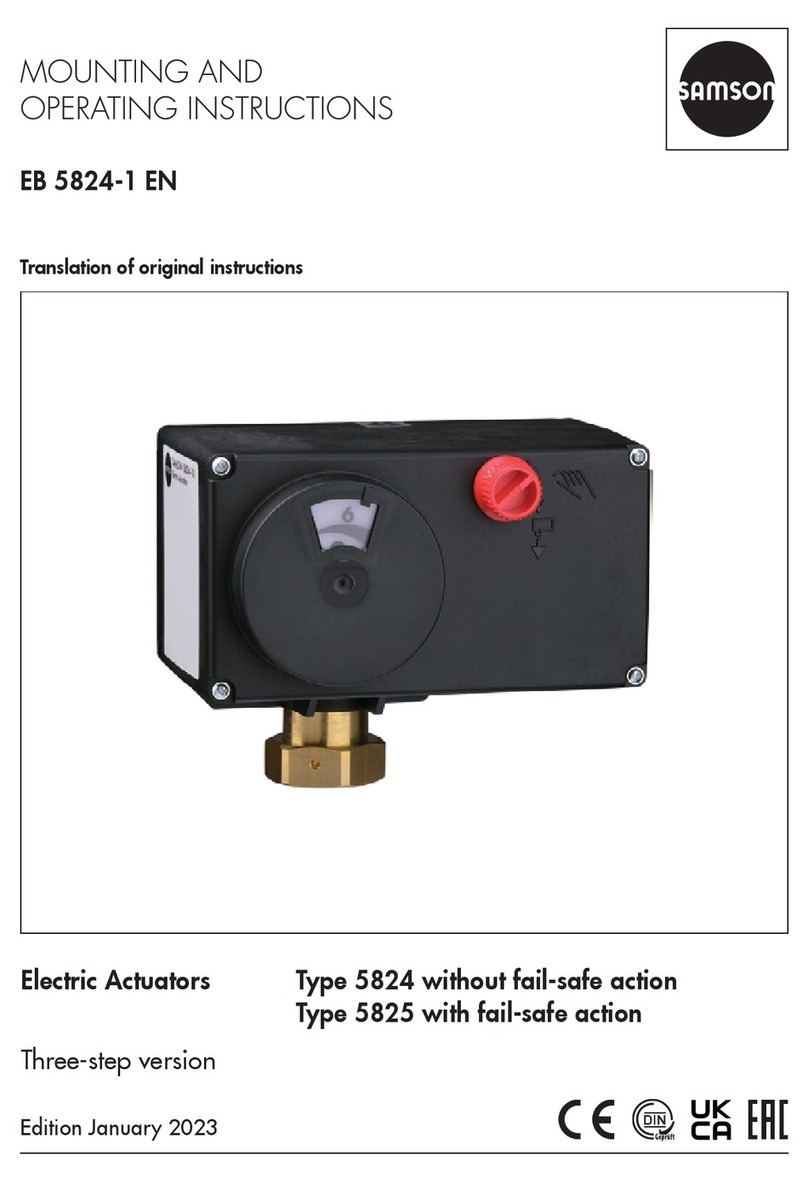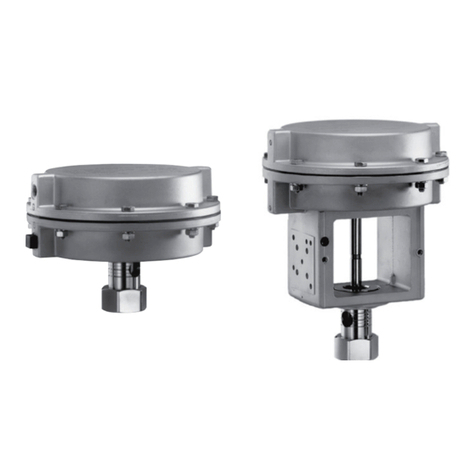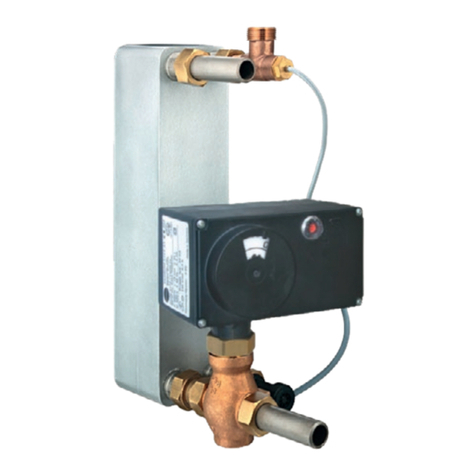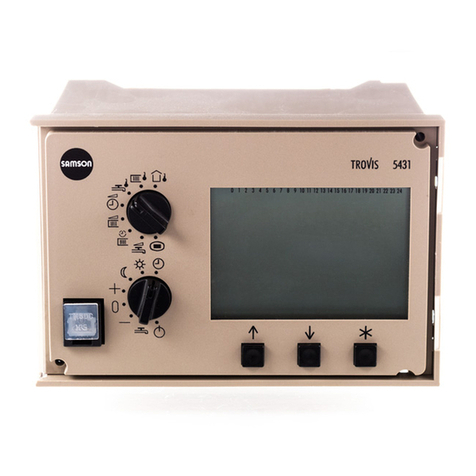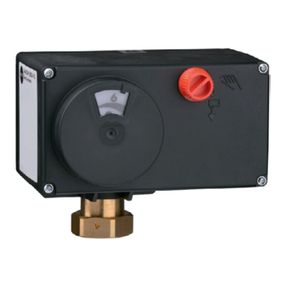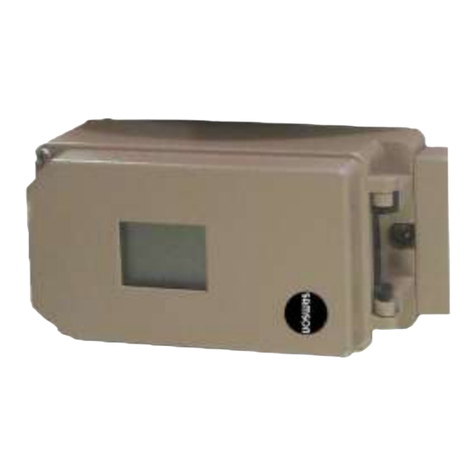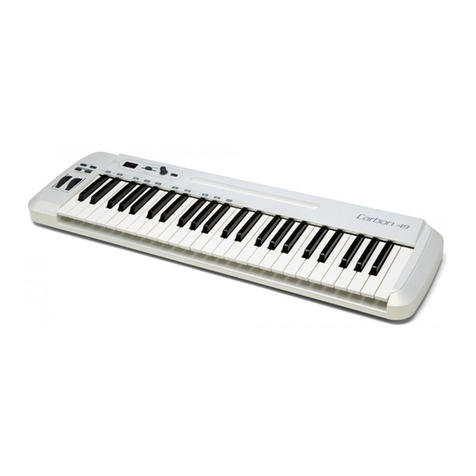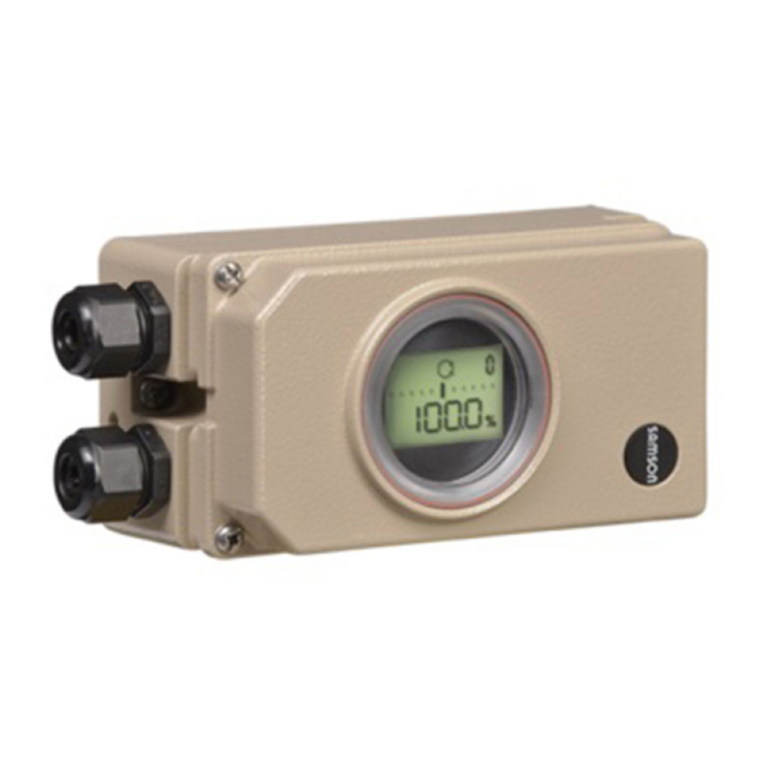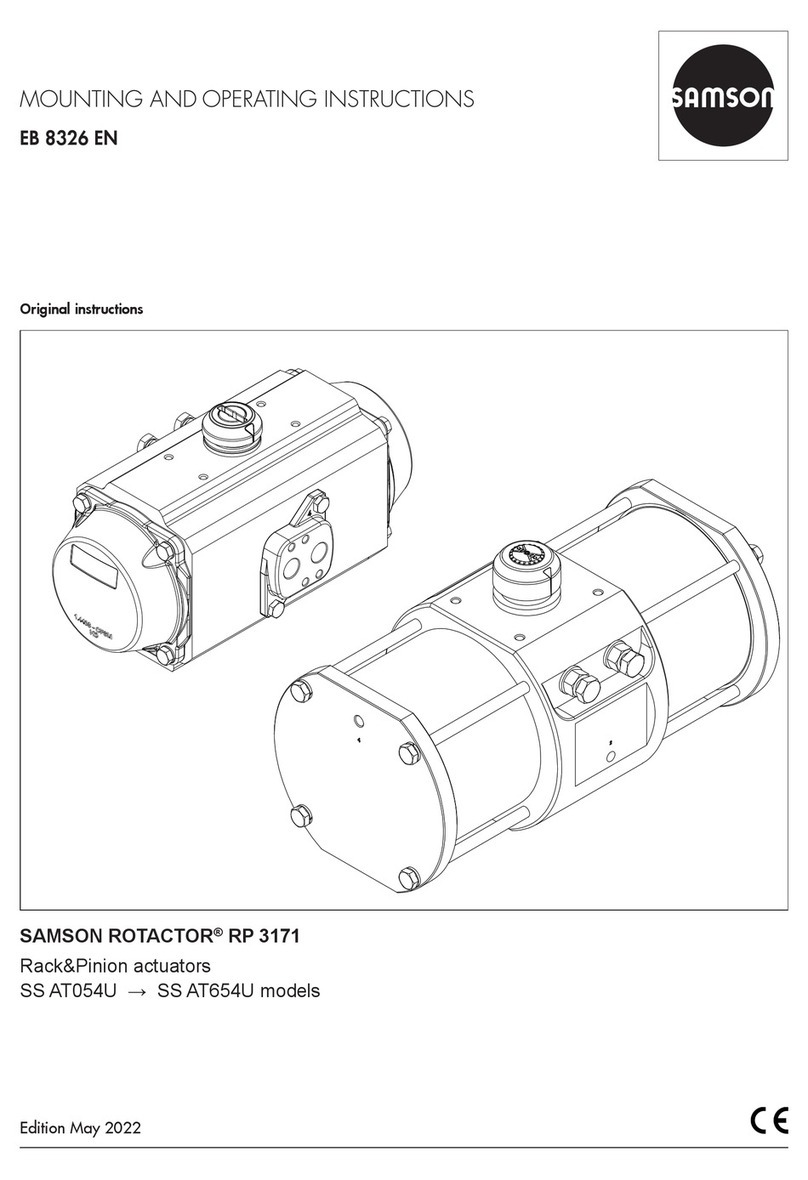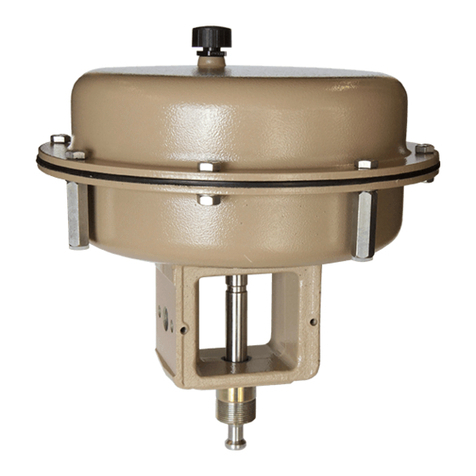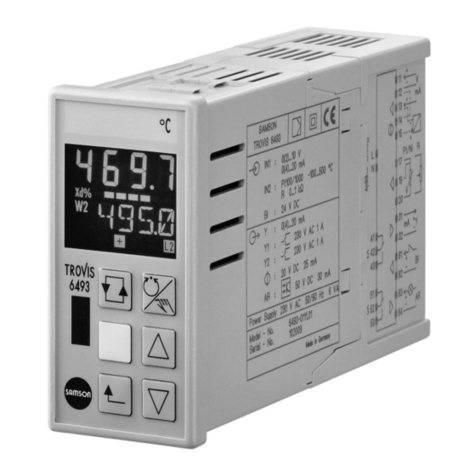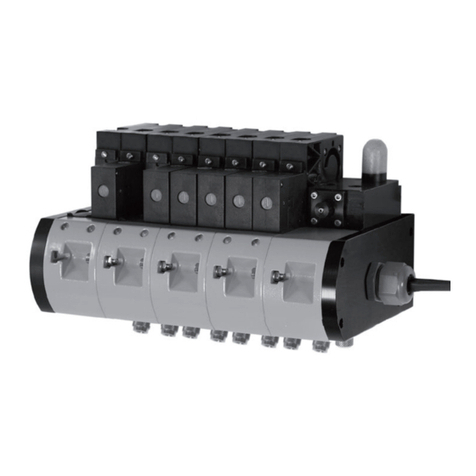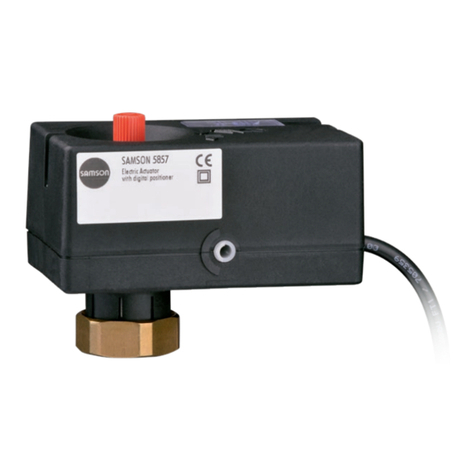
6 EB 8314 EN
Safety instructions and measures
Personal protective equipment
We recommend wearing the following personal protective equipment when handling the
Type3275 Pneumatic Piston Actuator:
−Protective gloves when mounting or removing the actuator
ÎCheck with the plant operator for details on further protective equipment.
Revisions and other modications
Revisions, conversions or other modications to the product are not authorized by SAMSON.
They are performed at the user's own risk and may lead to safety hazards, for example. Fur-
thermore, the product may no longer meet the requirements for its intended use.
Safety devices
The Type3275 Actuator does not have any special safety equipment.
Warning against residual hazards
To avoid personal injury or property damage, plant operators and operating personnel must
prevent hazards that could be caused in the actuators by the process medium, the operating
pressure, the signal pressure or by moving parts by taking appropriate precautions. They
must observe all hazard statements, warning and caution notes in these mounting and oper-
ating instructions, especially for installation, start-up, and service work.
Responsibilities of the operator
The operator is responsible for proper operation and compliance with the safety regulations.
Operators are obliged to provide these mounting and operating instructions as well as the
referenced documents to the operating personnel and to instruct them in proper operation.
Furthermore, the operator must ensure that operating personnel or third persons are not ex-
posed to any danger.
Responsibilities of operating personnel
Operating personnel must read and understand these mounting and operating instructions as
well as the referenced documents and observe the hazard statements, warning and caution
notes specied in them. Furthermore, the operating personnel must be familiar with the ap-
plicable health, safety and accident prevention regulations and comply with them.
Referenced standards and regulations
According to the ignition risk assessment performed in accordance with EN13463-1:2009,
section 5.2, the non-electrical actuators do not have their own potential ignition source even
in the rare incident of an operating fault. As a result, they do not fall within the scope of Di-
rective 2014/34/EU.
